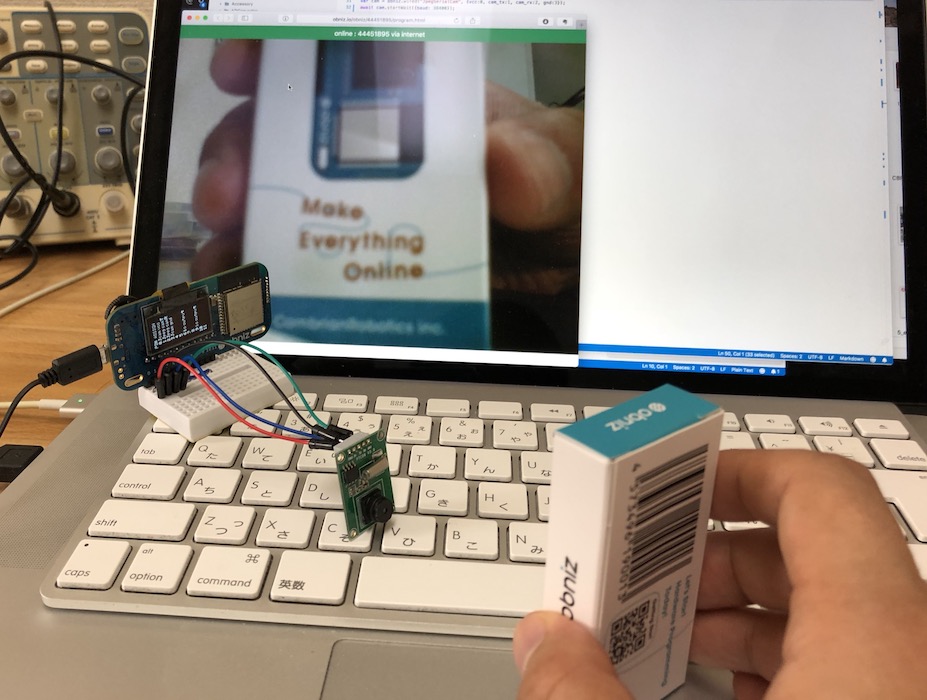Create your own outdoor streaming IoT with camera
Contents
Make things
Using the camera module and obniz, let’s create an IoT that can be streamed outdoors.
Materials
- Camera module JpegSerialCam x 1
- obniz x 1
- mobile battery x 1
- micro usb cable x 1
- cable x 数本
- wifi
How to make
Hardware connection
Connect obniz and the camera module as shown in this picture. Since this camera module communicates with UART, connect Tx and Rx for UART in addition to GND and VCC, and make a total of 4 wires.

Here we have chosen to supply power from two pins, and we are moving the camera in the way io6 and io9 are also used for vcc / gnd supply. Please supply power as follows.

Software
- Connect the obniz and the camera in software
The information wired above is also described on the software. Since io6 / io9 is used as an additional power supply, I will write that also.
obniz.com6.output(true);
obniz.com9.output(false);
var cam = obniz.wired("JpegSerialCam", {vcc:0, cam_tx:1, cam_rx:2, gnd:3});
- Initial setup of the camera
Make initial settings for the camera. The baud and the size of the acquired image are specified. Since streaming is performed, the fastest communication speed is specified with the smallest image size.
await cam.startWait({baud: 38400});
await cam.setBaudWait(115200);
await cam.setSizeWait("160x120");
- Keep taking pictures
Since you can take a picture with await cam.takeWait ();, keep taking it with while loop. Base64 encoded data is included in img tag to display on HTML.
while(true){
const jpegData = await cam.takeWait();
document.getElementById("image").src = "data:image/jpeg;base64," + cam.arrayToBase64(jpegData);
}
